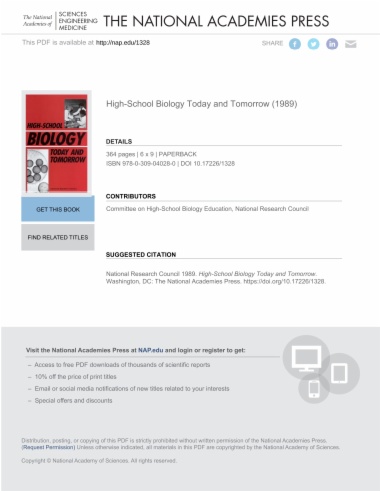

Biology is where many of science's most exciting and relevant advances are taking place. Yet, many students leave school without having learned basic biology principles, and few are excited enough to continue in the sciences. Why is biology education failing? How can reform be accomplished? This book presents information and expert views from curriculum developers, teachers, and others, offering suggestions about major issues in biology education: what should we teach in biology and how should it be taught? How can we measure results? How should teachers be educated and certified? What obstacles are blocking reform?